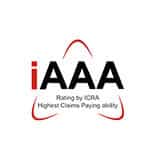

What is Myocardial Infarction – All You Need to Know about it
Overview
Also known as heart attack, myocardial infarction is a medical emergency caused due to short or abrupt cut-off of blood flow to the heart muscle. It usually happens when one or more coronary arteries get blocked due to plaque build-up in them. In case of a heart attack, timely restoration of blood flow is vital to prevent permanent damage to the heart muscle and even death.
The definition of myocardial infarction as per pathology is “myocardial cell death due to prolonged ischemia”. Ischemia is the inadequate blood supply to any part or organ of the body, particularly the heart muscle.
Types of Myocardial Infarction
The three types of heart attack are:
1. STEMI Heart Attack:
- STEMI means ST-segment elevation myocardial infarction.
- It is a serious heart condition caused due to complete blockage of the coronary artery.
- It prevents blood flow to a large part of the heart muscle.
- It requires immediate revascularization or restoration of blood flow to the blocked veins and arteries through drugs or angioplasty.
2. NSTEMI Heart Attack:
- Unlike in a STEMI, the affected cronary artery is only partially blocked in a NSTEMI.
- A NSTEMI won’t show any change in the ST segment on the electrocardiogram.
- Diagnosed when blood test shows elevated troponin protein levels.
- A coronary angiography will show the degree to which the artery is blocked.
3. Coronary Artery Spasm:
- It is also known as a coronary spasm, unstable angina, or silent heart attack.
- It occurs when blood flow stops or is drastically restricted due to tightening of heart's arteries.
- Only imaging and blood test can help detect if you’ve had a silent heart attack.
- There is no permanent damage during a coronary artery spasm.
- It increases a person's risk of having another heart attack which can be more serious.
Causes of Myocardial Infarction
Most heart attacks are caused by coronary artery disease in which one or more of the heart arteries are blocked. This blockage is usually due to cholesterol-containing deposits called plaques, which can narrow the arteries and reduce blood flow to the heart. If a plaque breaks open, it can form a blood clot in the heart.
A heart attack may be caused by complete or partial blockage of a heart (coronary) artery. Other causes include:
- Certain viral infections.
- Severe squeezing of a blood vessel that's not blocked, also known as coronary artery spasm.
- Spontaneous coronary artery dissection which is caused by a tear inside a heart artery.
Symptoms of Myocardial Infarction
Symptoms of a heart attack vary. Some people have mild symptoms, while few others may have severe symptoms or no symptoms. Common heart attack symptoms include:
- Chest pain (angina) - This can be mild with a slight discomfort or severe with a feeling of crushing pain. It may start in your chest and spread to other areas like neck, left arm, shoulder, back and waist.
- Shortness of breath.
- Fatique.
- Difficulty in sleeping (insomnia).
- Nausea or stomach discomfort.
- Palpitations.
- Feeling of anxiety.
- Sweating.
- Feeling of lightheadedness and dizziness.
Risk Factors of Myocardial Infarction
Several health conditions, lifestyle habits, age and family history can increase risk for heart disease and heart attack. These are
- Increasing age
- Hypertension
- Diabetes mellitus
- Abdominal obesity
- Abnormal lipid profile; low levels of HDL cholesterol and high levels of LDL cholesterol
- Smoking tobacco
- Family history of heart condition
- Excessive consumption of alcohol
- Inadequate consumption of fruits and vegetables
- Consuming a diet high in saturated fat
- Less or no physical activity
- Depression due to job loss, family issues, financial stress etc.
Diagnosis
In case of a heart attack or heart attack-like symptoms, one must visit a doctor immediately for necessary physical examination. It includes checking the pulse, blood pressure and blood oxygen levels. The doctor may suggest following tests:
1. EKG or ECG:
Also known as an electrocardiogram, it is one of the first tests done to diagnose the condition as it helps to measure the heart’s electrical activity.
2. Blood tests:
It helps to detect the presence of certain cardiac enzymes or cardiac markers in the bloodstream which are released when heart muscle cells are damaged. Presence of these cardiac enzymes suggests a heart attack or some other heart condition.
3. Echocardiogram:
This test helps to check if any part of the heart is blocked or damaged. It makes use of sound waves to create images of the heart and helps to check if the blood is moving properly through the heart and heart valves.
4. Angiogram:
Also known as coronary catheterization, it is a procedure that uses X-ray imaging to see your heart's blood vessels. The test is generally done to see if there's a restriction in blood flow going to the heart.
During an angiogram, a thin tube called catheter is inserted into an artery in the arm, leg or neck and guided to the heart. A type of dye that's visible by an X-ray machine is then injected into the blood vessels of your heart via the tube. The X-ray machine takes a series of images (angiograms), offering a look at your blood vessels.If necessary, the doctor can open clogged heart arteries (angioplasty) during the procedure.
5. Heart MRI:
An MRI machine uses radio waves and a magnetic field to generate images of heart and chest which helps for further treatment.
6. Heart CT Scan:
This type of scan is done with the help of a computer and it generates images that can help diagnose heart problems and understand the severity of heart damage.
7. Nuclear Heart Scans (NHS):
This procedure is done after injecting a radioactive dye into the blood but it is different from angiograms as it uses some computer-enhanced methods to create heart images.
Myocardial Infarction Treatment
To treat myocardial infarction or a heart attack, blood flow must be restored to the affected heart muscle before it gets damaged. Hence, healthcare practitioners use a combination of treatments to treat the condition and reduce the risk of recurrence.
1. Additional oxygen:
Giving additional or supplementary oxygen to someone who has low blood oxygen levels and is experiencing breathing problems can help to increase oxygen circulation in the blood. This helps increase oxygen circulation in the blood and prevents excessive strain on the heart.
2. Medications
Health experts may prescribe different medications basis the symptoms experienced, and to widen the blood vessels and restore adequate blood flow to the heart. This includes:
- Blood thinning medications: A doctor may prescribe anti-clogging or blood thinning medications as well as medications to relieve chest pain.
- Thrombolytic medications: This medication helps to break and dissolve the blood clot after a heart attack.
- Antithrombin or antiplatelet medications: This is prescribed to prevent further blood clotting.
- Anti-arrhythmia medications: Arrhythmia or irregular heartbeat can be life-threatening for heart patients. Hence, doctors often prescribe anti-arrhythmia medications to correct the heart’s beating rhythm and ease associated complications.
- Beta-blockers : This helps to reduce the blood pressure, keep the heart muscles healthy and lower risk of a future heart attack.
- Antihyperlipidemic medications: They help reduce lipid levels in the blood, especially low-density lipoprotein cholesterol.
Other Treatment Options
This includes:
- Coronary artery bypass surgery: Also known as coronary artery bypass graft surgery, this is an open-heart surgery which helps to restore normal blood flow to the obstructed coronary artery. It is done by grafting a vein above and below the blocked part of coronary artery.
- Coronary angioplasty: Also called percutaneous coronary intervention, this is a non-surgical procedure performed to widen narrowed or blocked coronary arteries. There are different types of coronary angioplasty which includes balloon angioplasty, coronary artery stent, atherectomy, and laser angioplasty.
Myocardial Infarction Complications
Heart attack complications often arise due to heart muscle damage. Potential complications include:
- Irregular heart rhythms (Arrhythmia): After a heart attack, the damage caused can affect how electrical signals move through the heart causing heartbeat changes, which may be serious and deadly.
- Cardiogenic shock: This is a rare condition which occurs when the heart suddenly and abruptly is unable to pump blood.
- Heart failure: When significant part of heart tissue is damaged, the heart gets weakened and is unable to pump blood effectively, often leading to a heart failure.
- Pericarditis: This is inflammation of the saclike tissue surrounding the heart. This condition may be called Dressler syndrome, postmyocardial infarction syndrome or postcardiac injury syndrome.
- Cardiac Arrest: This happens when without warning, the heart stops. It is caused by a sudden change in the heart's signaling and risk of this life threatening condition is increased after a heart attack.
Myocardial Infarction Prevention
Here are ways to prevent a heart attack:
- Follow a healthy and balanced diet containing lots of fresh fruits and vegetables, nuts, whole grains, legumes and oily fish.
- Stay active and exercise regularly.
- Maintain a healthy weight.
- Keep stress at bay.
- Quit smoking and follow healthy lifestyle habits.
- Manage other health conditions.
- Take medications as prescribed.
- Go for regular health check-ups.
Conclusion
Myocardial infarction or heart attack is a severe condition that requires immediate medical treatment. When someone suffers a heart attack, it is essential to restore blood flow to the heart as soon as possible to prevent permanent heart damage. People with heart conditions are at a higher risk of suffering a heart attack. Hence, they must make necessary lifestyle and diet changes without delay to stay healthy and improve heart health.
Source: my.clevelandclinic, emedicine.medscape, ncbi.nlm.nih.gov, hopkinsmedicine, healthline, sciencedirect, mayoclinic, secondscount
Get a right Health Insurance today & protect your savings from unexpected medical expenses.
Hospitalisation due to a heart attack can lead to expenses shooting up the roof. This can cause your savings to deplete and create financial stress. Being secured with a health insurance plan or a parent’s health insurance for older adults can save the day during such a crisis.
Disclaimer: This blog provides general information and discussions about health and related subjects. The information and other content provided in this blog, website or in any linked materials are not intended and should not be considered, or used as a substitute for, medical advice, diagnosis or treatment. Kindly contact your Doctor before starting a new medicine or health regime.

/diabetes_s.jpg?sfvrsn=27944770_2)
/cholesterol-s.png?sfvrsn=2cb77395_2)
/myocardial-infarction-s.jpg?sfvrsn=c30af9c0_2)
/cancer-w.png?sfvrsn=b00ce94_2)
/obesity_s.jpg?sfvrsn=41f27b41_2)












 Health Insurance
Health Insurance  Travel Insurance
Travel Insurance  Car Insurance
Car Insurance  Cyber Insurance
Cyber Insurance  Critical Illness Insurance
Critical Illness Insurance
 Pet Insurance
Pet Insurance
 Bike/Two Wheeler Insurance
Bike/Two Wheeler Insurance  Home Insurance
Home Insurance  Third Party Vehicle Ins.
Third Party Vehicle Ins.  Tractor Insurance
Tractor Insurance  Goods Carrying Vehicle Ins.
Goods Carrying Vehicle Ins.  Passenger Carrying Vehicle Ins.
Passenger Carrying Vehicle Ins.  Compulsory Personal Accident Insurance
Compulsory Personal Accident Insurance  Travel Insurance
Travel Insurance  Rural
Rural 










